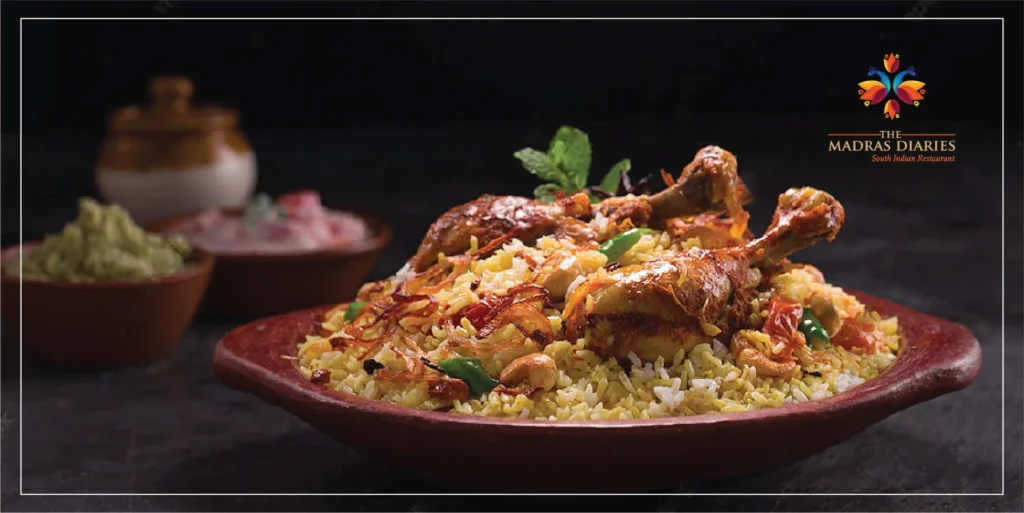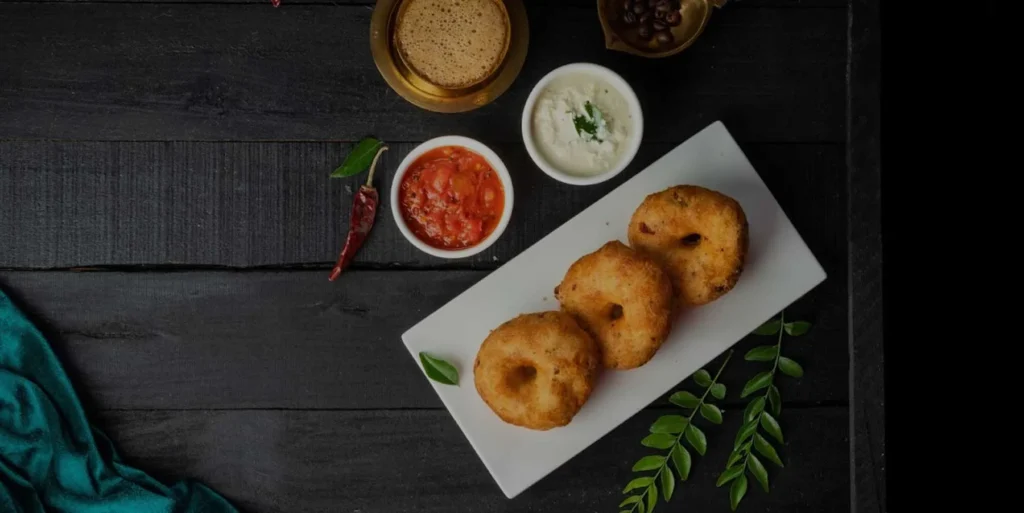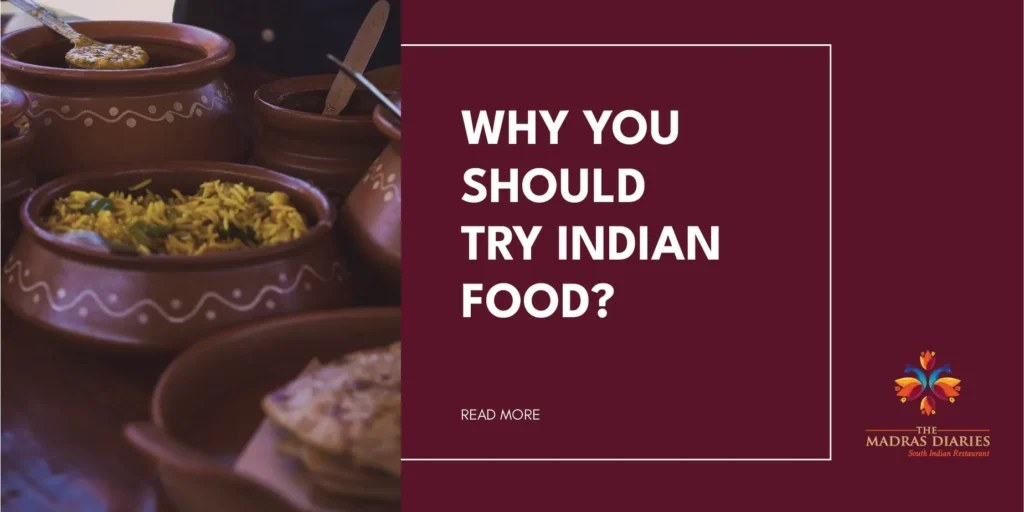If there is a foodie out there who has yet to taste biryani, you are missing out on one of your most pleasurable culinary experiences. There is something about biryani that makes it both comfort food and an indulgence. Ask any biryani lover, and they will tell you that if you have tasted biryani and do not like it, you just have not tasted the right kind of biryani, for there is a biryani for every palette.
What is biryani?
There are many names and many origin stories for this dish. Some Indian dialects like to call it biriyani, while others call it briyani and yet others call it birani. Whatever the name, the biryani, with all its accompaniments, occupies a place in our hearts that nothing else can.
The dish is made with seasoned rice loaded with spices and meat or vegetables. There are theories that the biryani originated in different parts of the world and came to India thanks to travellers and invaders. Come to think of it; it makes sense. A marauding army needs strength, and a wholesome dish with cooked meat, vegetables and rice together, would be the ideal meal in itself while there are armies on the move.
But Indian varieties of biryani go far beyond a hastily put-together combination of rice and meat or vegetables. Biryani is all about aromatic rice mixed with the most precious spices and meat cooked until it is succulent. It is a labour of love, as the phrase goes.
Whatever the name or the place of origin, every biryani recipe has something in common- rice and spices. However, that is where the similarity ends. Different types of meat of varying cuts and sizes, various spices and cooking styles make the ‘favourite biryani battle’ a never-ending one.
What is dum?
Dum is a method of slow-cooking meat and rice. This method of cooking is usually done using a heavy-bottomed utensil. The reason behind using a heavy-bottomed utensil is that there is constant heat for many hours, and a thin vessel would result in the burning of the food. This utensil is usually sealed after all the ingredients have been added.
Types of biryani
Owing to its popularity, many types of biryani are based on the ingredients that go into it. The vegetarians indulge in paneer, mixed vegetable, mushroom and other varieties of biryani, including soya that closely resembles mutton. The non-vegetarians relish chicken, mutton, fish and shrimp biryani, to name a few.
We have listed a few types based on the region that biryani originates from. Talking about every type would keep us here for longer than the time it takes to prepare a pot of the delicious meal, so we have chosen a few of the most common ones.
Malabari Chemeen biryani
The Malabar region, the northern part of Kerala, is known for its Arab influence. The biryani here is no different. Containing a different array of spices when compared to some of its South Indian counterparts, this biryani is all about subtlety. It contains white rice laced with traces of green, because of the green chilli added to it and is usually served with masala separate from the rice.
This is a powerhouse of taste and spice, despite its mellow colour. The Malabari biryani is famous for appearing low on spice but contains the right blend of flavours. The special ingredient in this type of biryani is green chilli, along with lime juice. Normally, chefs grind green chilli and add this ingredient to raw onions, tomatoes and ginger-garlic paste to create the base. Fennel, cardamom, cloves, peppercorns, and the spices of the land lend their flavour to this preparation.
This biryani follows the dum preparation method, with layers of rice alternating with masala. It is garnished with fried onions and coriander leaves. Another speciality of this biryani is the use of a variety of rice known as the Basmathi rice, an especially aromatic variety used mostly in South India.
Kerala’s Chemeen biryani is a must-try at The Madras Diaries. This chemeen biryani is a quintessential Malabari or Thalassery biryani that is mouth-watering. Made with fresh, succulent prawns and aromatic rice, this biryani is as aromatic as it is flavourful. We use an ancient recipe for the spice mix, bring the spices from the land of spices itself, and create a flavour that will have you coming back for more. Our chefs cook the biryani using the dum method by layering the masala with cooked rice.
The layers become more flavourful and aromatic with fried onions, coriander leaves and lemon juice. We subject the dish to slow cooking, using heat on the top and at the bottom so that the flavour seeps into every grain of rice.
Garnished with fried onions, coriander leaves and a lot of love, this biryani will have you coming back to us for more.
Pallipalayam Kozhi biryani
Pallipalayam, located close to Erode, has a cuisine that has grown in popularity over the years owing to its spice content and flavour-packed food. Pallipalayam biryani is a dish that is resonant in the Kongu region. An ancient spice mix makes this dish stand apart from the rest of the types of biryani.
The spicy masala made of shallots and spices is the marinade we use for the chicken meat. This marinated meat and spices combine with aromatic jeeraga samba rice to make a biryani that is a must-try for every biryani lover. If you are someone who doesn’t love biryani, well, what can we say? Try this, and you might be converted.
At The Madras Diaries, we love recreating dishes that speak volumes about Indian kitchens. The tantalising smells, nostalgia-inducing flavours and the sheer joy of having every taste bud dancing in the revelry are some that our chefs aim for. The Pallipalayam biryani that we have on our menu ticks all these boxes. Our marinade is a rich mixture of spices such as clove, cardamom, star anise and bay leaf, with the signature biryani mix that makes this biryani a cut above the rest.
We add this spice mix to the chicken as a marinade and then cook the rice and the marinated chicken to give you a biryani you will never forget. This is slightly spicier than the other biryani dishes on our menu, so we recommend it with raita if you have a toddler with you.
Hyderabadi Gosht Dum Biryani
The Hyderabadi Nawabs enjoyed luxury in every form, and their food could not be any different from their lifestyle. It is said that the chefs of the Nizams took a leaf out of the recipe books of Mughal kitchens to make biryani. But they developed close to 45 new varieties of biryani for the Nawabs. The world-famous Hyderabadi dum biryani uses raw meat, rice, spices, and other ingredients to create a flavour bomb in every morsel.
The dum cooking method ensures that the flavours seep in and combine well. There are layers to this biryani as well, and fried onions, mint and coriander leaves add to this biryani’s exotic blend of flavours. The rice used in this dish’s preparation is different from the other South Indian varieties. Chefs use a long-grain version of basmati rice to make this biryani.
Hyderabadi biryani is a mix of flavours. The sweet taste of the caramelised onions and raisins blends in perfectly with the spice mix to give you an explosion of sumptuousness that nothing else can match. At The Madras Diaries, we endeavour to create this unmatchable flavour with authentic recipes from the best Hyderabadi kitchens.
Kaikari biryani
The Madras Diaries have something for everyone. So, all the biryani lovers out there who are vegetarians, do not fret. We have one of our best-sellers for you- Kaikari biryani. ‘Kaikari’ means vegetables. This biryani, true to its name, is a delicious mix of aromatic spices blended with rice. Julienned vegetables cooked perfectly meet spiced rice to make a biryani that vies for the top position among our restaurant’s dishes. We also use woody spices like cinnamon and cardamom to enhance the taste and fragrance of this biryani.
Our chefs use the freshest produce available. Therefore, the vegetables we use in the biryani are from familiar sources and are as fresh as they come. We use clarified butter or ghee in the making of this biryani. All our ingredients are from the best sources to ensure you enjoy the best.
We look forward to serving you in classic The Madras Diaries style.



